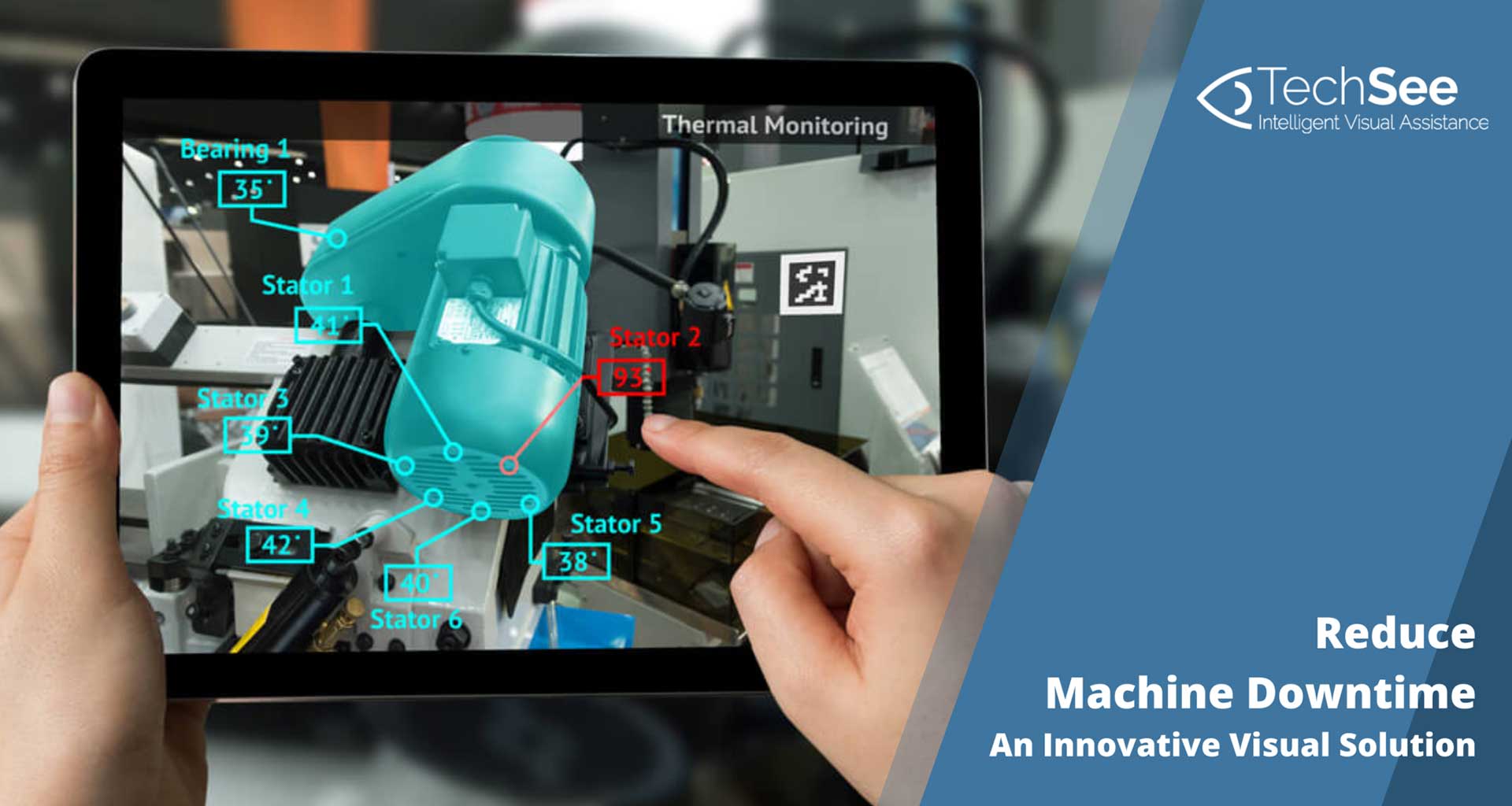Contents
- How To Avoid Machine Downtime The Traditional Way
- Why Visual Inspection Isn’t So Effective in Preventing Downtime for Machines
- Predictive maintenance solutions
- Manufacturing Productivity Improvement Ideas
- Enhancing The Visual Process
- Automating Visual Inspections
- Emergency Visual Assistance
- Automated Visual Assistance
- Is a Unified Visual Maintenance Strategy the Way Forward to Avoid Machine Downtime?
According to Aberdeen Research, 82 percent of companies experience unplanned machine downtime, costing as much as $260,000 an hour, resulting in companies exploring effective solutions to reduce machine downtime.
Unplanned downtime can result from a wide range of causes, including excessive tool or job changeover. However, equipment failure and unanticipated maintenance remain the biggest concerns for most companies, hindering the drive toward the highest possible Overall Equipment Effectiveness score.
How To Avoid Machine Downtime The Traditional Way
For decades, manufacturers have sworn by the principles of Total Productive Maintenance. This Japanese corporate philosophy is based on empowering and inspiring all employees to take proactive roles in ensuring the smooth functioning of the facility.
A key pillar of this approach is Autonomous Maintenance, whereby shop floor workers carry out basic maintenance of equipment, for example:
- cleaning machines
- visual inspection, and
- early detection of machine degradation.
It has been estimated that 27% of companies use visual inspection as their primary predictive maintenance methodology to help reduce machine downtime. This means that on-site workers are entrusted with carrying out physical inspections, drawing conclusions based only on their own expertise. But the facts and figures speak for themselves. Machine downtime remains a growing problem.
Why Visual Inspection Isn’t So Effective in Preventing Downtime for Machines
Since visual inspection is traditionally carried out by humans, there are many disadvantages to using it to reduce machine downtime.
- Human error, often caused by inadequate training or fatigue, can result in inaccurate and inconsistent findings.
- Subjectivity, since multiple inspectors may be called upon to inspect the same machinery.
- Record-keeping. Once again, human error can frequently affect the quality of inspection records, when data must be manually entered into spreadsheets.
- Accidents can happen, especially when industrial equipment is elevated or hard to access. And since safety is a top priority in all industrial sectors, the quality and frequency of visual inspections can suffer, especially when staff are needed for other urgent duties.
Predictive maintenance solutions
Predictive maintenance solutions are, of course, widely used in the industry, allowing companies to take some of the guesswork out of the inspection process. Measuring variables ranging from temperature and pressure to vibration and rotation speeds, these systems can be deployed alongside the latest AI-powered approaches such as digital twins.
Manufacturing Productivity Improvement Ideas
Despite the disadvantages associated with the traditional visual inspection process, the visual approach still has a vital role to play in how to reduce downtime in manufacturing. When implementing ways to improve manufacturing productivity and efficiency, visual inspections can be used successfully to avoid machine downtime. With the right combination of technologies, industrial enterprises can now move toward a unified visual manufacturing maintenance strategy to reduce downtime.
Enhancing The Visual Process
Two pairs of eyes are better than one. When a machine operator tasked with carrying out a visual inspection is backed up by a remote supervisor, there’s far less room for error. When the operator uses a head-mounted camera or a smartphone to capture images of the machine, an expert can confirm correct functioning. Video and stills can also be recorded for later viewing, and to provide a complete visual record of each inspection, resulting in reduced machine downtime.
Automating Visual Inspections
With the rapid rise of Computer Vision AI, enterprises now have the ability to position cameras at critical points along a production line, including in difficult-to-access areas. This gives them the ability to automate the entire visual inspection process. Computer Vision algorithms can be trained to recognize and flag up even the slightest deviations in machine components, preventing downtime.
Emergency Visual Assistance
When machine downtime occurs, it’s always a race against time to get the line up and running as quickly as possible. But in the case of highly specialized machinery, it can take days for a properly trained technician to arrive on site. That’s when visual assistance comes into play. By establishing a live video stream between the remote expert and the on-site worker, precise visual guidance can be provided through Augmented Reality pointers and annotations, displayed on either a head-mounted system or a smartphone or tablet.
Automated Visual Assistance
The near-term goal of Remote Visual Assistance providers is to achieve the delivery of fully automated guidance for machine repair. The reality is that remote experts aren’t always available to offer real-time guidance to on-site workers. This is especially the case when downtime occurs during a night shift or when international time differences are factored into the equation.
When every minute counts, Computer Vision-powered self-service holds the key to the fastest and most effective solution to how to reduce downtime in manufacturing.
The system is initially trained in a collaborative process between the machine supplier and the Visual Assistance provider. Then, machine learning algorithms enable the system to become smarter over time, recognizing fluctuations in performance and drawing conclusions each and every time an issue occurs.
Is a Unified Visual Maintenance Strategy the Way Forward to Avoid Machine Downtime?
In the Industry 4.0 era, manufacturers need to develop strategies that combine the very best technologies in order to reduce machine downtime to an absolute minimum. While next-generation sensors and predictive algorithms are powerful tools, the visual dimension remains key. By marrying Computer Vision AI with human experience and expertise, enterprises can both predict and resolve production interruptions more effectively than ever before. Learn more about how to reduce downtime in manufacturing here.






